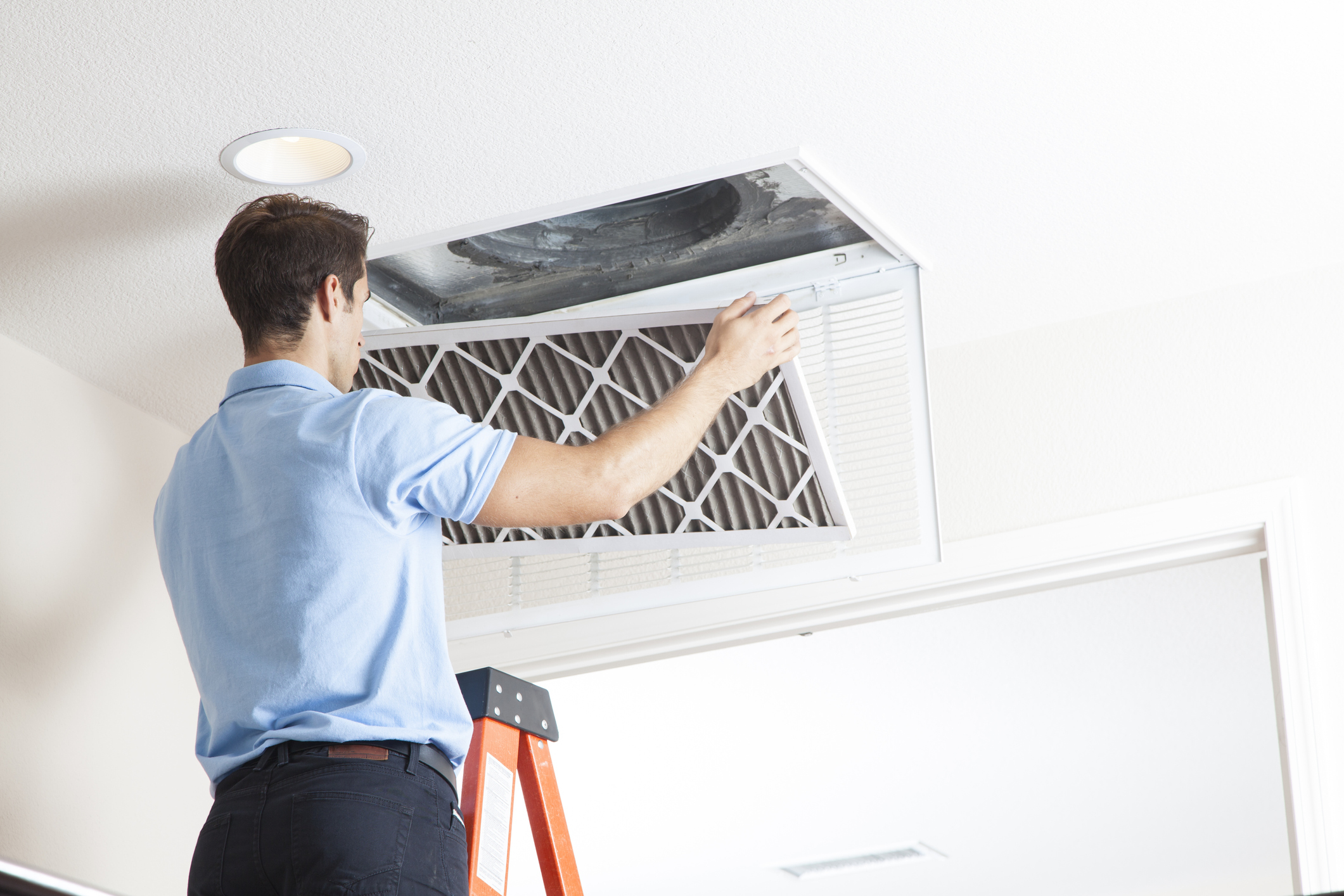Proper HVAC systems maintenance and cleaning is an important part of facility management. However, the dust, allergens, dirt, mold, chemicals and other contaminants that collect in a building’s HVAC infrastructure is out-of-sight, and all too often out-of-mind.
These are important questions for any business owner and facility manager to consider:
- Why should your business prioritize HVAC maintenance?
- How often should your air ducts and HVAC systems be cleaned?
- Who should carry out this important job and how?
HVAC Infrastructure and Air Quality
Air ducts act like the lungs of your building: they bring air in and out. As such, your HVAC infrastructure is directly responsible for the Indoor Air Quality (IAQ) — the temperature, humidity, ventilation and chemical or biological contaminants of the air inside a building.
It doesn’t take an HVAC expert to realize that dust, dirt, as well as chemicals, mold, and other contaminants accumulate over time in your air ducts. This buildup can have negative effects on employees suffering from environmental allergies or respiratory issues like asthma, and can cost your business significantly in lost efficiencies.
Now this doesn’t necessarily mean that dirty air ducts are creating an unhealthy indoor environment, however thorough and regular cleaning of your building’s air ducts can help improve air quality and your air system’s functionality.
Benefits of improved indoor air quality include:
- Better efficiency and energy cost savings
- Improved employee productivity, satisfaction, and retention
- 78.56% average ROI of IAQ improvement program
Aside from overall general good air systems hygiene, some businesses and industries require more thorough, frequent, and robust HVAC infrastructure maintenance and cleaning. For example, some manufacturing and production businesses must adhere to more stringent de-contamination processes (like pharmaceutical companies or high-tech operations). Healthcare, assisted living, and educational facilities may be interested in more regular HVAC air systems cleanings in an effort to prioritize public health and wellbeing.
Work with HVAC experts to determine the size and scope of an air systems cleaning program that fits your business.
What to Look For
In addition to the cleaning cadence established with an HVAC partner, some signs it is time to clean air ducts include:
- Visible buildup
- Employees mention increased sensitivity to allergies or asthma triggers in the workplace
- HVAC air systems aren’t working properly
The Commercial Air Duct Cleaning Process
Your business’s HVAC maintenance and cleaning requires good planning and clear communication to ensure continuity and to minimize disruption. Certified HVAC partners are the gold standard when it comes to air duct cleaning and maintenance. Technicians are highly trained, skilled, and adhere to top industry standards and guidelines.
Planning
Every business has different needs, infrastructure, and operations — so trusted HVAC experts should work closely with you to review goals, timeline, and project specifics.
Cleaning
During the cleaning process, the HVAC system is placed under continuous negative pressure powered by a filtrated vacuum to prevent the spread of debris and contaminants. This continuous negative pressure allows very fine particles to be removed from the system as they become airborne, ensuring that these particles are not released back into the work space when the system is turned on after cleaning. The negative pressure extracts the loosened contaminants into the vacuum while never releasing them into the building.
Maintenance is Key
Cleaning air ductwork is an important and significant undertaking that requires regular maintenance and careful planning. Work with a trained and certified HVAC company that will help devise a clear and comprehensive plan so you can trust your systems are working effectively, efficiently, and safely.








